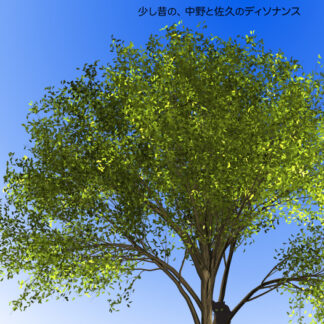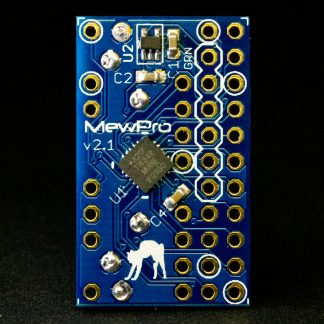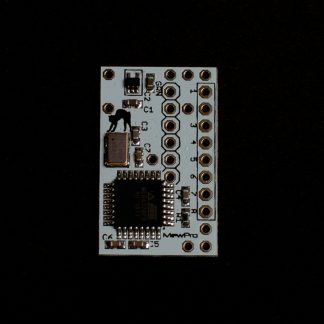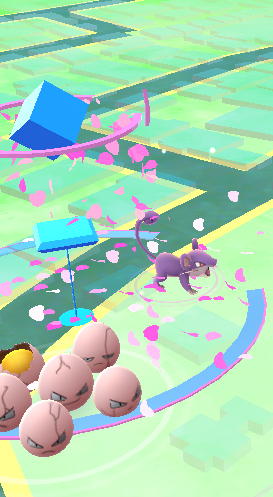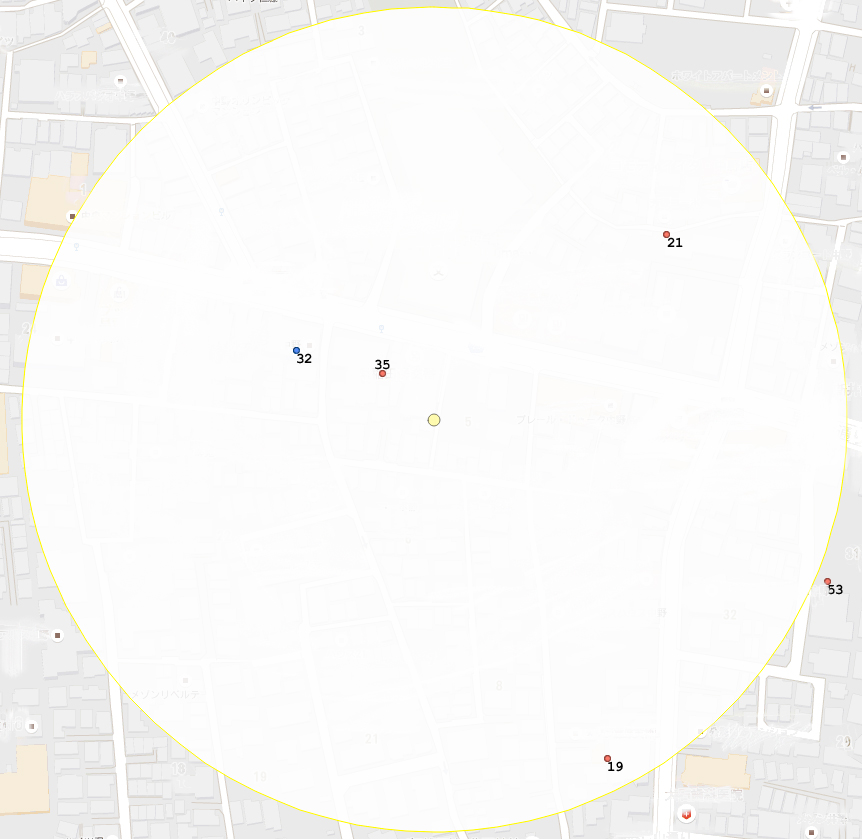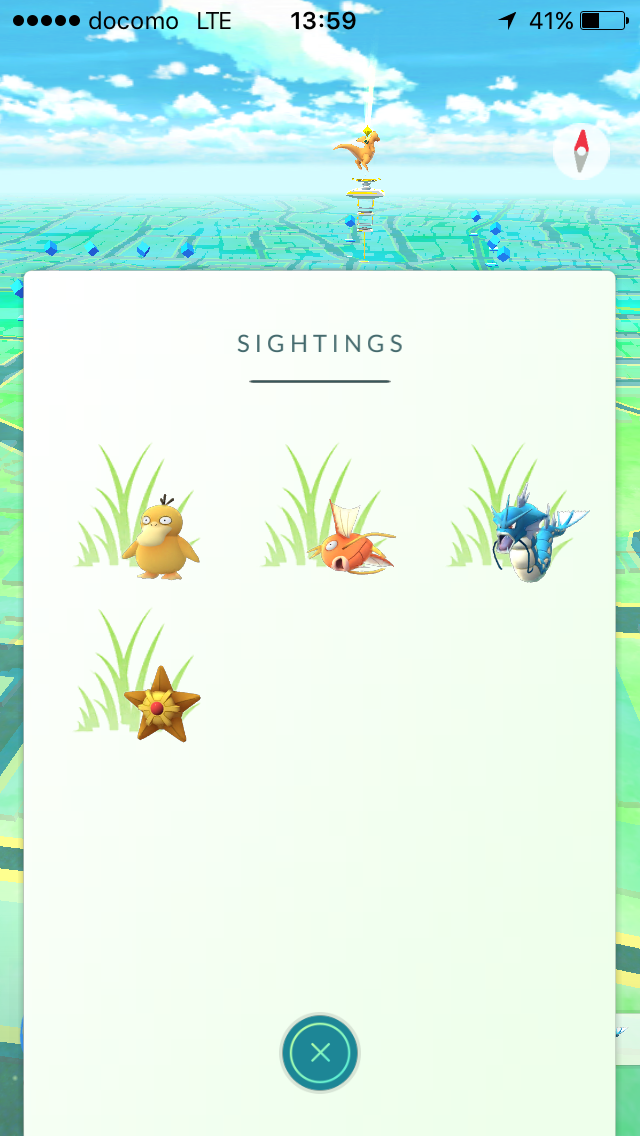
This post explains a way to utilize the SIGHTINGS list in Pokémon GO application for finding rarer Pokémons.
6 Nov 2016 UPDATE: Emergence duration is changed from 15 minutes to 30 minutes. The source updating algorithm has changed.
Introduction
Each Pokémon we see in the virtual 3D field of Pokémon GO is either of the following.
- Case A: Lured Pokémon
- There are two subcases: 1) Found at a Pokéstop with storm of falling pink petals, appears there during 30 minute period after someone has stabbed a lure module at the stop (once per 3 minutes); 2) found around the avatar of a Pokémon trainer while he/she is with pink aroma of incense (once per 5 minutes).
- Case B: Periodic Pokémon
- Otherwise.
We’ll focus on periodic Pokémons in the rest of the blog post. The explanation why we call them periodic is postponed until the next section.
There is an easy visual difference between the above two Cases: If it appears as a Pokémon sitting on or floating above pink smaller concentric moving circles or hovering waves then it belongs to Case A. If it is with white larger ones then Case B.
Example: In the following screen capture the Rattata (at the right, purple mouse Pokémon) is a lured Pokémon or of Case A, while the Exeggcute (at the left, human faced egg Pokémon) Case B.
It is said that using lure modules or incenses is one of instant and obvious hacks to get many Pokémons of Case A. But what can you do with other Pokémons? Are you really satisfied encountering with them only by chance?
In the following sections we will show you a systematic, deterministic method to meet with many Pokémons of Case B without need to be lucky.
Pokésource
Let’s start the section by presenting some of our observations.
Contradicting everyone’s intuition, each Pokémon as well as lured one does NOT move on or drift to somewhere, just stay at their conjured place for a while, and unless you get it by throwing Pokéballs then pop disappear into thin air.
Definition. A Pokésource is a geographic location on which Pokémons without lured appear.
That is, if no one use lure modules and you don’t use incense then Pokémons never appear except a Pokésource is located within your view or a circle of radius 40m (or 50m if GPS accuracy is worse).
Unlike Pokéstops, Pokésources are invisible on the 3D map. However, they somewhat have a tendency to be placed near Pokéstops.
Thus, we already have called these non-lured Pokémons periodic.
An invisible Pokémon becomes pop visible when you go walk and your search view or the area of pink and white circle wave emitted by the avatar once reaches the geolocation of Pokésource.
The following is an actual map showing all Pokésources in a Tokyo suburb, Japan (as of 6th Nov 2016).
Each digit represents the constant x minute past every hour.
In the above map all locations of Pokésources are marked red but one having multiplicity 2 blue.
SIGHTING list
The following fact is the fruit of our investigations.
A periodic Pokémon appears in the tab at x minute past every hour (where x is the constant) and vanishes 27 to 30 minutes after that for Pokésource of multiplicity 1. While the Pokémon is listed in the tab, it means your avatar can encounter it in the 3D map when you approach near enough to its Pokésource.
Example: Suppose it is 20 minutes past 8 o’clock in the morning, and you are eating breakfast in your dining room located at the center of the circle of the above Tokyo suburb Pokésource map. One minute later you suddenly notice that there appears the gray silhouette of Mewtwo in your SIGHTING tab! What should you do?
Needless to say you should go out immediately to the location marked 21 and you can actually get it! Because it is the only place having spawning time of 21 minutes and the SIGHTING list quite accurately shows all Pokémons in the immediate vicinity of 200 meters.
We like to close this revolutionary article by some tips.
Tip 1: If you get a periodic Pokémon by throwing balls then it also disappears from the SIGHTINGS list, unless another same Pokémon still exists in the area.
Tip 2: Periodic Pokémons are very punctual in appearing time but have some fluctuation in vanishing.
Tip 3: The order of Pokémons in the list is completely random. However, the first row is shown when the tab is shrunk.
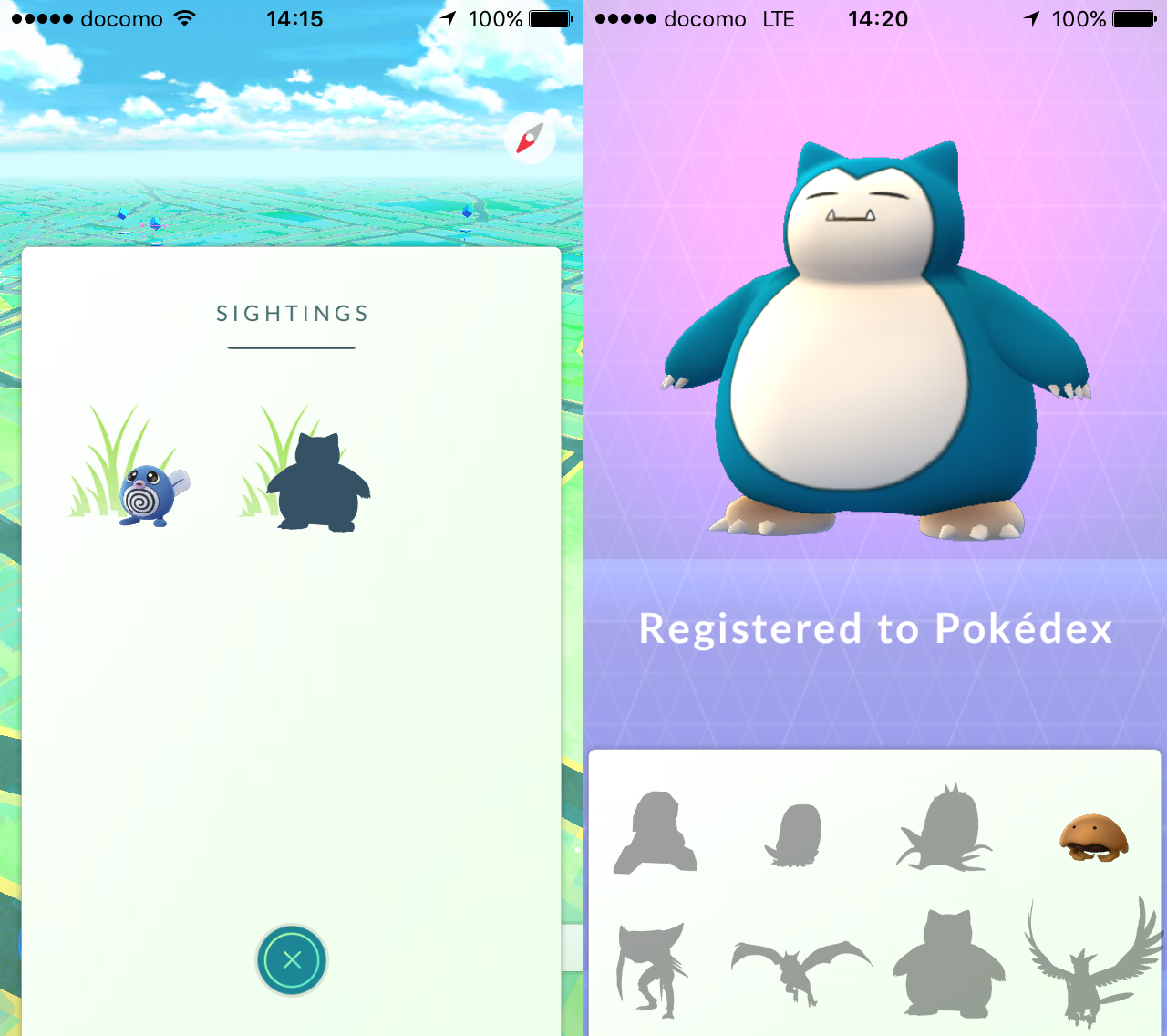
Enjoy!

